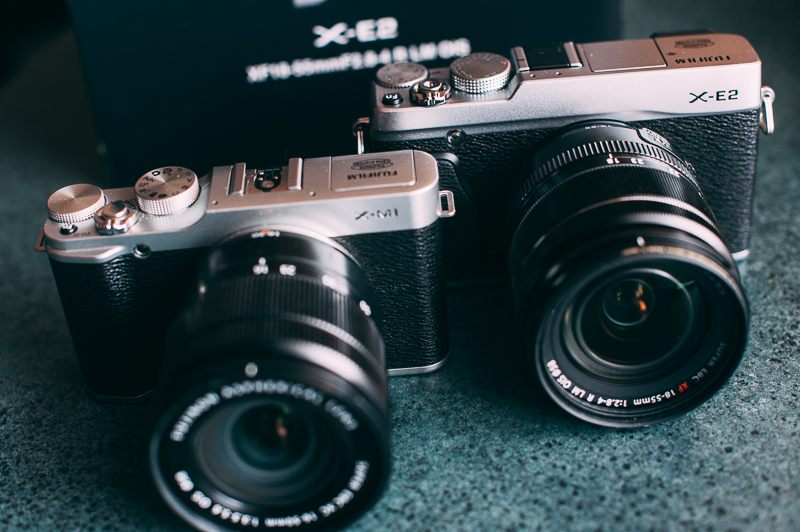If you like this post, help us share it
If you are looking for the best mirrorless camera, check out this blog post here. Mirrorless cameras are so well designed and engineered that I feel entry level DSLRs are now slowly being obsolete. The only benefit you have with entry level DSLRs is the Optical View Finder and faster focus. If you are getting into DSLR, make sure you go with Full Frame, otherwise stick with mirrorless with APS-C sensor. Medium format on DSLR and Full frame on mirrorless have the same analogy, they are currently overly priced.
There are so many different mirrorless cameras on the market now days, majority of them come from Sony, Fujifilm and Olympus. I have been using Fujifilm for quite some time now because of its X-Trans CMOS sensor which is known for its super sharp image quality. Recently, I have just migrated to the Fujifilm X-E2 from the X-M1. I intend to use the X-E2 as my casual camera only, so there are a lot of things that are not so critical. For professional work, I will definitely be using Nikon DSLRs.
Before I migrated to X-E2, I have been using X-M1 extensively and before that Sony NEX. The reason I switched to Fujifilm was because of the X-Trans CMOS sensor, the rotatory dial on the top plate, tilt-able pop up flash and the classic look. Admittedly, the classic look was 50% of the reason. At the time, I picked up the X-M1 over the X-E1 because it is smaller and has better features like Wifi and 3” 1.04M LCD. When the X-E2 was announced, I was excited to see improved features are added to the camera like phase detection AF and live exposure preview in M mode. If you are wondering whether you should upgrade from the X-E1, check out all of the new features on the X-E2 here and see whether they are important to you.
When I first picked up the X-E2, I immediately felt the build quality difference, it was slightly larger and has more weight to it. It actually felt more solid than the X-M1. The X-E2 with the 18-55mm fits in the hands much better and the added weight actually feels more comfortable. The 18-55mm lens of cause is no comparison to the 16-50mm. It is all metal and has a decent f/2.8-4 aperture range, a stop faster than most typical kit lens. I was surprised to see both lenses have a similar size.
You can order your Fujifilm X-E2 + 18-55mm f/2.8-4 here and Fujifilm X-M1 + 16-50mm f/3.5-5.6 here

On the top of the X-E2 it has a shutter speed dial and an exposure compensation dial. It doesn’t have a mode dial like most mirroless cameras. The shutter speed dial is extremely useful, each click of the dial is 1 stop of shutter speed adjustment, if I want an increment of 1/3 of a stop, I can turn the thumb wheel. This is a brilliant feature which means I can control one stop or 1/3 of a stop at my finger tips. Similarly, the aperture control is on the lens itself which acts like a digital aperture ring.

The back of the camera is where you see the differences. The ergonomic design of the X-E2 shines here where it has more functional buttons. There are separate buttons for AF-L, AE-L, Drive mode, AE metering mode and Fn2 (WB setting), so you don’t have to change the settings via the menu. The Q button on the X-E2 is better placed and the rest of the buttons are less crowded. The X-M1 only has one customise Fn button. In my opinion, one customise button is too little, I would need to have at least ISO, metering mode, AF-L and AE-L at the finger tips to be considered adequate.
Something you won’t know from the spec is although both cameras have a 3” LCD; 921K dot (X-M1), 1.04M dot (X-E2), the LCD on the X-M1 lags quite a bit. The response time on the X-E2 is much faster, it handles better with live view and video.
The EVF is also a big feature on the X-E2 over the X-M1. It has been improved over the X-E1 with boosted refresh rate (60fps vs 20fps) in low light condition. I have always thought EVF is not so important on a casual camera because there are ways around it and I have all the time to take a photo.
But having used it for a while, it does make the camera a bit more professional, less like a digital compact camera. While it is no where near like an OVF, it is useful on a bright day when you can’t see the LCD screen and when times I don’t want to look like a tourist chimping on the LCD.

Here are a couple of questions?
Should you upgrade your X-E1 to X-E2?
X-E2 is not revolutionary over the X-E1, it has evolved through a lot of improvements and fine tuning. Check out the new features on the X-E2, if there is nothing that you can’t live without, stick with the X-E1.
Should you get the X-M1 or X-E2?
If you are on a budget, get the X-M1, X-E2 is twice expensive. The sensor on both cameras are the same, so expect the same image quality. The operation and handling of X-E2 is where it shines.
If you think you will benefit from the extra features on the X-E2, get the X-E2, it is a better performing camera.
Where can I find the equipment seen on this site?
If you find this site useful and planning to purchase any of the equipment seen on this site, please show your support by purchasing your photo equipment at B&H Photo Video, or through any of the affiliate links seen on this site.


